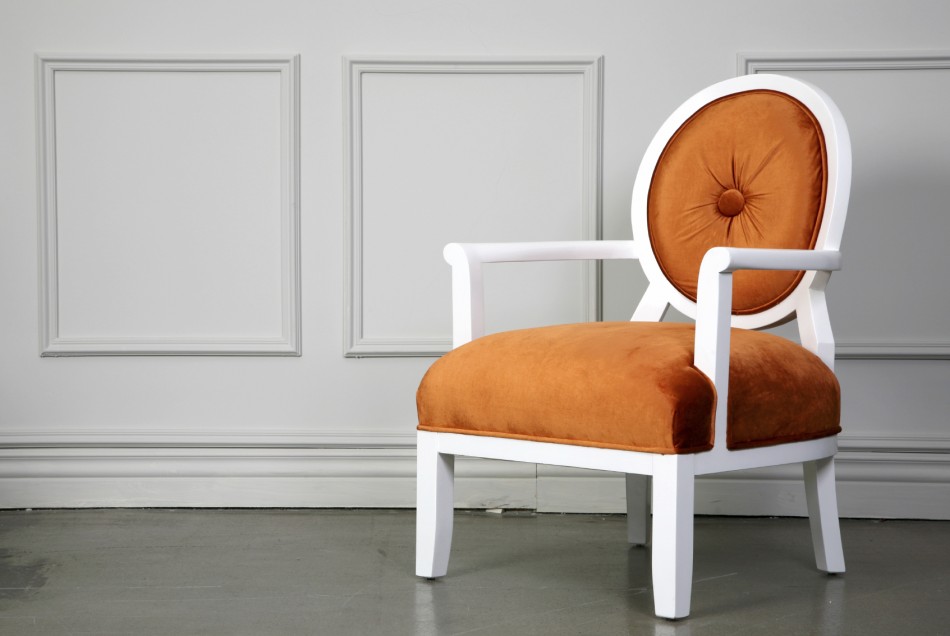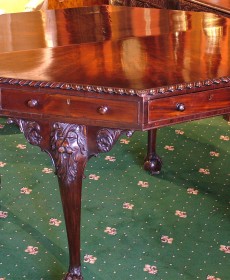
Tightening loose chairs is one furniture repair most homeowners avoid. Everyone assumes you need dozens of clamps, a special glue and knowledge akin to black magic to repair a chair – not so. Your total expenditure for repairing every loose chair in your home should be less than buying a new one, even if you have to buy everything list above.
For now, we’ll assume the chair is loose, but nothing is broken. Replacing broken parts is a whole other ball game.
The first consideration is the type of chair. If you have a typical dinette set (informal), the chairs have legs that are not perpendicular to the floor and all the joints are glue joints. The legs are glued directly into the bottom of the seat with no screws. Dining room chairs (formal) typically have legs parallel to each other (or nearly so), perpendicular to the floor. The cushioned seat is attached with screws, and the corners of the frame immediately below the seat are held together with a block in each corner that is screwed and/or glued in place. Most chairs will fit into one or the other of these two categories, or perhaps combine features of both.
Tools for Deconstruction:
- A rubber mallet (wrapping an old sock around a regular hammer will NOT work). This will run less than $10.00. 16 to 24 ounces is heavy enough.
- A roll of 1″ masking tape
- Pencil
- Screwdriver
- Sharp pocket knife
First put a piece of masking tape on each part of the chair to mark its position. Use a simple abbreviation code: RF=right front, LF=left front, etc. Mark each piece, all four legs, the stretchers that run between the legs front to back on each side, and, if there are any, the stretcher(s) running left to right. Mark the stretchers so you can tell which end goes in front, back, left or right. These pieces may look symmetrical but chances are they aren’t. They must go back in the same position they were in originally. With a formal chair, also mark the rails, those board-like pieces immediately beneath the seat cushion.
With a formal chair, remove the upholstered seat and the screws holding the wooden corner blocks in place. Number the blocks and the inside of the rail so you can put the blocks back where they came from.
Now see what you can pull apart just by wiggling and pulling on the pieces. After you’ve removed what you can, go after the stretchers, if they haven’t already come out. Use the mallet to hit the leg, swinging parallel to the stretcher. Hit as close to the joint as possible, holding the stretcher tightly. Continue this process until the stretchers are removed.
Having removed the stretchers, the legs should be looser than they were, if not falling out. Use the same process to separate the legs from the rails (on a formal chair) or, on an informal chair turn the piece upside down, striking the seat bottom with the mallet while holding the leg to be removed. Always try to hit as close to the joint as possible, swinging in line with the piece you’re trying to remove. You want to pull it out, not break it off. Do this over a padded surface. If the piece separates suddenly, remember you’re holding only part of it; the rest will fall. One last note: some joints will be just as tight as the day they were originally glued. The old adage, “If it ain’t broke, don’t fix it” applies. If you can’t get a joint apart without extreme exertion, leave it alone.
Got the chairs apart, did we? No mashed fingers or broken parts? Good! Now let’s make them like new again.
Tools for Reassembly
- Pocket knife with a small blade
- The shortest coil available of sash cord (ask for it by name). This looks like clothes line, but it isn’t. Sash cord is the woven cotton rope that was used to hold sash weights in old fashioned windows. If you have a choice, get the larger diameter.
- 3 feet of 5/8″ or 3/4″ dowel rod, cut into 1 foot lengths
- An old cotton T shirt cut up into small rags
- A section of newspaper
- Some Q-tips
- A small pan of water
8 ounce bottle of Elmer’s Carpenters Wood glue
Using your masking tape markers as guides, put the chair back together. No glue, yet. This is a dry fit, to make certain you’ve thoroughly cleaned the holes and not left any burrs elsewhere that will hinder the assembly when you do glue it. Correct anything that doesn’t fit.
Whether you’re working with formal chairs (cushion seat) or dinette chairs (legs attach directly to the seat) here’s the assembly process. Fold the newspaper to get a square 4 or more layers thick. Put a puddle of glue on it about the size of a silver dollar (ask your grandfather).
For dinette chairs: using a Q-tip, spread the glue (you want to get a film of glue – if the glue runs, you’ve got too much) over the tenons of the stretcher and into the holes the tenons go into. If there is a left to right stretcher, fit it into the two side stretchers first, then insert them into the legs. Spread the glue over the leg tenons and their matching holes in the seat, and insert them. On a chair that was just slightly loose before, you may have to use the mallet to drive them in. You should give them a good tap, anyway, just to make certain you drive them home. Set the chair upright on a flat surface. Take a length of sash cord long enough to go around the chair at the feet, and tie a knot in it. The cord should be slightly loose. Insert a section of dowel rod between the cord and the chair, and turn it clockwise to form a tourniquet. Keep turning it to tighten the cord and drive the tenons completely into place. Angle the dowel so it catches on the chair seat (or a stretcher) and can’t unwind. Dip a rag in the water and wipe off the squeezed out glue. Dry the joints with another rag. Set it aside overnight on a flat surface (this lets you be sure all four legs are touching the ground and you haven’t pulled the chair out of line).
For formal chairs, spread the glue as before to attach the front rail to the two front legs. Assemble stretchers as above,and then put the side stretchers into the front legs. Put the side rails into the front legs. Lay the chair on its back on the floor. Position the stretchers and side rails over the holes and drive them into place with the mallet. Set the chair upright on a flat surface. Take two sections of sash cord, one around the rails, the other around the legs at the stretchers. Wind up both with dowel rods uniformly to tighten the joints. Wipe off glue as before and leave to dry. Corner blocks can be replaced after the frame has set up.
Be sure to put the chairs on a flat surface while tightening. This insures that all four feet meet the floor

